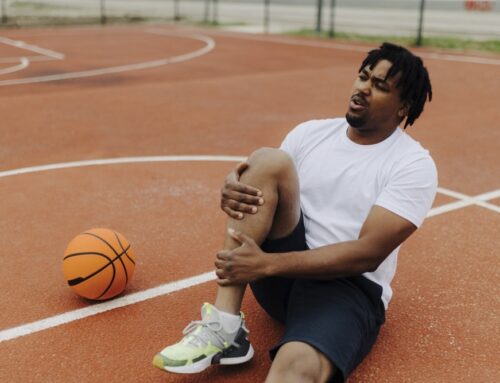By Dr. Derek Reinke, board-certified orthopaedic ACL doctor and surgeon specializing in sports medicine
An ACL tear is a dreaded diagnosis for many athletes. It can mean the end of the season, surgery and a prolonged recovery. When an athlete injures his or her knee, what are the typical findings and signs of this injury?
Causes of an ACL injury
It is important to realize that not all ACL (anterior cruciate ligament) tears involve a violent collision. In fact, 70% of ACL injuries occur without contact. Many may appear rather underwhelming and may not be noticed at first by medical staff on the sidelines.
ACL tears are often deceleration injuries. An ACL injury may occur when the athlete is jumping and landing. This coming to a sudden stop or switching directions rapidly can cause the ligament to fail. The ligament becomes stretched beyond its limits and then ruptures. We are used to seeing the violent hits that occur during football games on TV, but this is not the case in most ACL injuries.
Top sports that cause ACL injuries
Knee injuries of this nature are more common in certain sports than others. In high school, football for males is by far the most typical cause (71%), and soccer for females is the most frequent (53%). Basketball follows as the second most prevalent sport causing injury in each gender (5.5% and 27%, respectively).
So, how do you know if you have sustained an ACL tear?
Sign #1: You heard or felt a popping sound
Feeling a “pop” in the knee is common. About 70% of patients with ACL injuries will describe a popping sensation, and many will actually hear it as well as feel it. It should be quite concerning, especially with a deceleration injury. Athletes may notice a shifting sensation or giving way as the ligament fails. They may complain that the knee buckles out from underneath them as they try to walk or bear weight.
Sign #2: Rapid swelling occurs
Frequently, rapid swelling will occur within a few hours after the ACL is torn, which is caused by bleeding from the tearing of vessels within the ligament. Swelling can also occur as a result of associated injuries with the ACL, such as bone contusions or meniscus damage. As the knee fills up with blood, it may become quite swollen and tense.
The range of motion may become limited because of the pressure in the joint. Swelling is a frequent but not universal finding. Our orthopedic surgeons see many patients who present with minimal to no swelling, so this is not a hard and fast rule.
Sign #3: An athlete can’t return to the game
Another common finding is the athlete’s inability to return to the game. Usually, the knee is quite unstable, and the pain prevents the individual’s return to play. So if a player is able to get back into the game, this is often a good sign that he or she has not damaged their ACL.
ACL reconstruction surgery
ACL surgery is the most common treatment to replace a torn anterior cruciate ligament. The surgeon will remove the torn ligament and replace it with a band of tissue that usually connects muscle to bone. The graft tendon is taken from another part of your knee or from a deceased donor. ACL reconstruction is an outpatient surgery that is safe and proven.
ACL doctors in Raleigh, Cary, Triangle region
To summarize, an athlete who feels a pop or shifting sensation in the knee and if the joint swells within a few hours of the injury should be wary. This does not require a trip to the ER or urgent care but should be assessed by an orthopaedic ACL surgeon within a couple of days. Cary Orthopaedics sees patients at our clinics in Cary, Holly Springs and Morrisville to treat ACL injuries and other orthopaedic conditions.







